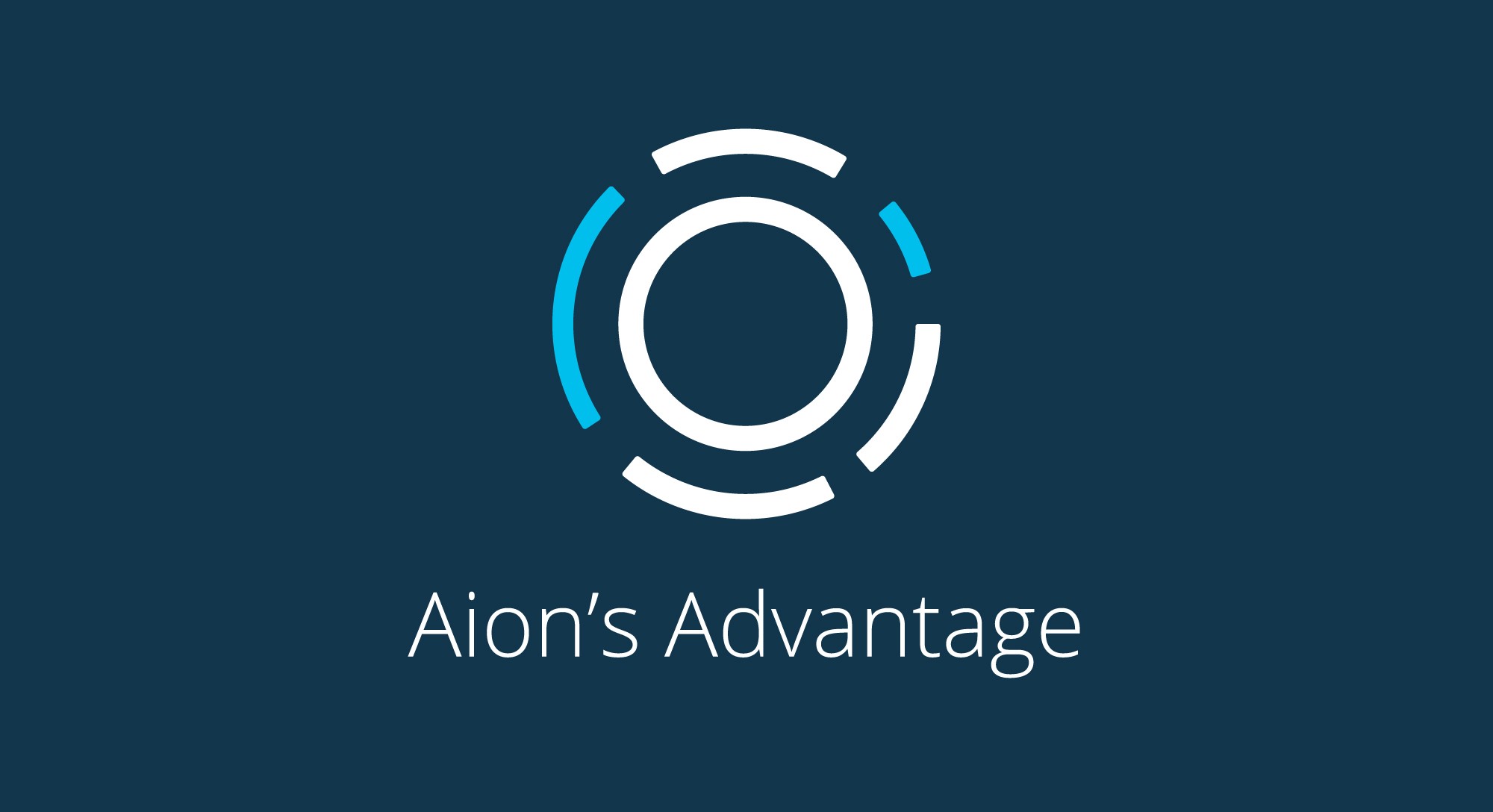The blockchain interoperability space has gained the interest of multiple blockchain projects to try and solve one of the critical obstacles for widespread blockchain adoption. The number of projects working to solve this problem statement speaks to its immense importance for the blockchain networks of today and the future technological infrastructure of tomorrow. Aion is not only building a network to connect disparate blockchains together, but also create the infrastructure to launch powerful decentralized applications that can operate across the Aion connected network.
We at Aion believe we have the experience, strategy and technical approach needed to create the third generation blockchain network needed to solve this problem and build the Dapps of tomorrow.
Listen to Aion Founder Matthew Spoke talk about Aion’s approach
Key points
- Over 2 years of experience building production-grade enterprise blockchains
- Advisory team composed of Ethereum Co-Founder, Toronto Stock Exchange VP, Former VP of Yahoo, and Founder of Vonage among other thought leaders
- Intent from Fortune 1000 manufacturing company Moog Inc. and other enterprises to build on top of Aion
- Team of 25 engineers, designers and business development based in Toronto, Canada
- Member of the Enterprise Ethereum Alliance
- Decentralized and incentivized bridging mechanism to connect blockchains
- Aion-1 protocol with Aion Virtual Machine to build powerful Dapps connected across the network ecosystem
Experience
The Aion project is being led by Nuco, an enterprise blockchain company. Nuco has worked over the past two years with numerous clients building production-grade enterprise blockchain networks. From our experience in the enterprise industry and the Enterprise Ethereum Alliance we understand the obstacles enterprises face to adopt production level blockchain systems and their requirements for them to be effective. Many of these obstacles such as scalability, interoperability and privacy are also challenges being faced by public blockchains. We believe that building a network to effectively interconnect public, consortium and private blockchains will create the catalyst for long-term mainstream blockchain adoption.
We are thankful to share and be supported in this vision by an advisory board composed of blockchain veterans, enterprise executives and thought leaders.
Anthony Di’Iorio: Ethereum Co-Founder & Founder of Decentral
Salim Ismail: Fr VP Yahoo, Founder Singularity University
Jeff Pulver: VoIP Pioneer and Founder of Vonage
John Lee: VP of Enterprise Delivery Toronto Stock Exchange
Eric Gu: CEO of ViewFin & Founder of Metaverse Project
Peter Vessenes: Co-Founder Bitcoin Foundation & Managing Director of New Alchemy
Dr. Moe Levin: CEO of Keynote
Steven Nerayoff: Serial Entrepreneur & Advisor of Ethereum
Michael Terpin: CEO of Transform Group & Co-Founder of BitAngels
Simon Taylor: Co-Founder and Blockchain Lead at 11:FS & Host of Blockchain Insider Podcast
Tony van Marken: Former Telecom CEO and Venture Capitalist
Eric M. Wetlaufer: Global Head of Public Market Investments at Canadian Pension Plan Investment Board
Strategy
The Aion project is adopting a unique iterative design and development strategy. While the core technological components outlined in our white paper (Inter-chain bridging, Aion Virtual Machine, Proof-of-Intelligence, etc) are highly complex and ambitious by nature, we believe in getting prototypes, MVP’s and tools in the hands of developers, enterprises, and end users as soon as possible. We want to hear your bugs, wish list features and must haves as soon as possible, not waiting multiple years to give you something real. This approach allows us and the community to provide rapid feedback, collaborate on features and co-create this network together. This collaboration is critical to build such a global and interconnected technology.
Technology
In the current state of the blockchain industry, we all share a common passion and tremendous excitement for the potential of this technology. Each project is equally testing, prototyping and experimenting with their own unique hypothesis for how do we achieve this potential.
At Aion, we have a unique hypothesis for the next generation blockchain network. We believe these core components come together to form our perspective at this challenge:
Bridging Protocol
The Aion network utilizes bridges to connect blockchain networks. Instead of a centralized entity or contract managing transactions and state changes between networks, the bridge itself is decentralized. The bridge utilizes a lightweight BFT consensus algorithm to validate, sign and propagate transactions across networks.
Each bridge can also be viewed as its own product. Aion network participations such as developers, enterprises and other protocols are encouraged and incentivized to connect their own or other blockchain networks by building a bridge. The fee structure and features of these bridges can then be customized based market demand or segments. As an example, we envision multiple bridges connecting the same two networks, each one offering their own unique features such as a low fee structure and high throughput and others providing transaction obfuscation.
Aion -1 Protocol
Aion 1 is a public blockchain protocol that serves as a “router” connecting blockchain networks. This protocol built by Aion will provide the initial foundation to transmit transactions across blockchains by having established bridges between Aion-1 and other connected networks. We are focused on establishing an Ethereum bridge within Phase 1 (early 2018) of our roadmap and subsequently establishing bridges with other public protocols and key enterprise blockchains.
Aion-1 is also designed as a protocol to build powerful decentralized applications that can interoperate with connected networks. Dapps on Aion-1 have the potential to fully scale across multiple blockchains, gathering transactions, events and data from hundreds of connected networks.
Consensus Model
The Aion 1 protocol utilizes a Byzantine Fault Tolerant (BFT) algorithm, combined with a hybrid protocol that aims for a fair representation of both parties in backing. This is achieved through a token system and partly through a novel verification algorithm based on concepts used in modern neural networks called proof-of-intelligence.
Aion-1 will employ a representative validation model similar to the delegated model explored by the BitShares team and Lisk. This validation model will allow Aion network participants to back validators who actively participate in the consensus process, enabling a drastic increase of participation beyond what conventional BFT algorithms would technically allow for.
Validators are backed based on an algorithm that is broken into two distinct categories:
1. Backing by staking: Involves staking tokens towards a particular validator over a term of time. After the term, tokens are returned to the user (provided no malicious actions have occurred). Before that, a user can also opt-in to have their tokens remain staked towards the same validator.
2. Backing by solving: Proof of Intelligence is an economic measure to deter denial of service attacks by requiring participants, solvers in Aion-1, to perform artificial intelligence (AI) computation. A unique puzzle is generated per request and the puzzle must be solved through the PoI algorithm to generate a proof of intelligence. The proof is then submitted to the network as proof of an amount of backing for a particular validator. Solvers are also rewarded proportionally to the amount backed. The intent is to motivate the creation of AI-specific or specialized hardware that could be used for machine learning and neural network training in the future
We believe our experience, strategy and technological approach will enable us and the community to build this third generation blockchain network together.



